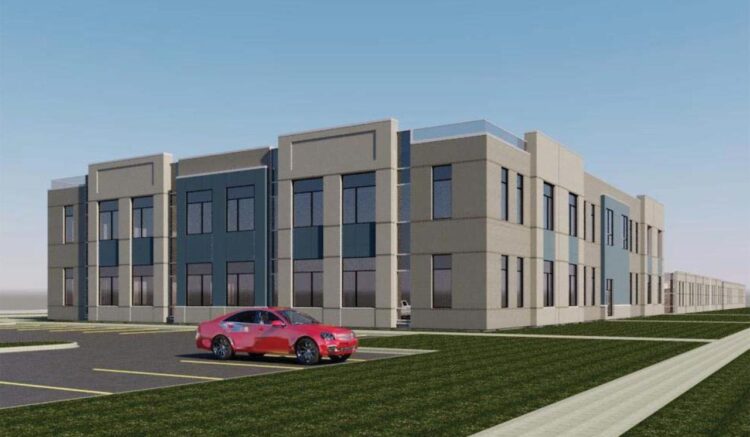
- Definition and Scope of Emergent Health Networks
- Benefits and Challenges of Emergent Health Networks
- 3. Key Stakeholders and Collaboration in Emergent Health Networks
- Data Management and Interoperability in Emergent Health Networks
- Technology and Innovation in Emergent Health Networks
- Sustainability and Future of Emergent Health Networks
Definition and Scope of Emergent Health Networks
Emergent health networks are dynamic, self-organizing collaborations among healthcare providers, organizations, and communities that aim to improve health outcomes by leveraging shared resources and coordinating care.
These networks typically encompass a diverse range of healthcare stakeholders, including hospitals, clinics, long-term care facilities, community health centers, and social service agencies.
Key Characteristics and Components
- Collaboration and Coordination: Networks foster collaboration among providers to ensure seamless care transitions, reduce duplication of services, and improve communication.
- Shared Resources: Networks enable the pooling of resources, such as electronic health records, data analytics, and specialized expertise, to enhance patient care.
- Patient-Centered Approach: Networks prioritize patient-centered care by empowering individuals to actively participate in their health management and decision-making.
- Community Engagement: Networks actively engage with community members to address social determinants of health and promote health equity.
- Data-Driven Decision-Making: Networks leverage data analytics to identify gaps in care, track patient outcomes, and inform decision-making.
Examples and Impact
- The Accountable Care Organization (ACO) Model: ACOs are networks of healthcare providers that work together to provide coordinated care to Medicare beneficiaries, with the goal of improving quality and reducing costs.
- The Patient-Centered Medical Home (PCMH) Model: PCMHs are primary care practices that provide comprehensive and coordinated care to patients, emphasizing preventive care and patient engagement.
- Health Information Exchanges (HIEs): HIEs are networks that enable the secure exchange of electronic health information among healthcare providers, facilitating care coordination and reducing medical errors.
Benefits and Challenges of Emergent Health Networks
Emergent health networks offer several potential benefits for patients, providers, and healthcare systems.
For patients, these networks can improve access to care, particularly in underserved areas. They can also reduce costs and improve the quality of care by coordinating care among different providers and settings.
For providers, emergent health networks can provide a platform for collaboration and information sharing. This can help to improve the efficiency of care delivery and reduce the risk of medical errors.
For healthcare systems, emergent health networks can help to reduce costs and improve the quality of care by promoting the use of evidence-based practices and reducing duplication of services.
However, there are also some challenges associated with implementing and managing emergent health networks.
One challenge is the need for strong leadership and coordination among the different stakeholders involved. Another challenge is the need to develop and implement effective information systems that can support the sharing of patient data among different providers.
Despite these challenges, emergent health networks have the potential to significantly improve the delivery of healthcare. A number of case studies and research findings have shown that these networks can be effective in improving access to care, reducing costs, and improving the quality of care.
Benefits for Patients
– Improved access to care, particularly in underserved areas
– Reduced costs
– Improved quality of care
Benefits for Providers
– Platform for collaboration and information sharing
– Improved efficiency of care delivery
– Reduced risk of medical errors
Benefits for Healthcare Systems
– Reduced costs
– Improved quality of care
– Promotion of evidence-based practices
– Reduced duplication of services
Challenges
– Need for strong leadership and coordination
– Need for effective information systems
– Resistance to change
Case Studies and Research Findings
– A study by the Commonwealth Fund found that patients in emergent health networks had better access to care, lower costs, and higher quality of care than patients in traditional healthcare systems.
– A study by the National Institute for Health Care Management found that emergent health networks can reduce costs by up to 10%.
– A study by the American Medical Association found that emergent health networks can improve the quality of care by reducing the number of medical errors.
3. Key Stakeholders and Collaboration in Emergent Health Networks
Emergent health networks involve a wide range of stakeholders, each playing a crucial role in their success. Collaboration and coordination among these stakeholders are essential for effective and efficient healthcare delivery.
Key Stakeholders
Key stakeholders in emergent health networks include:
- Healthcare providers (hospitals, clinics, physicians)
- Payers (insurance companies, government agencies)
- Patients and families
- Community organizations
- Government agencies
- Technology companies
Importance of Collaboration
Collaboration among these stakeholders is vital for:
- Improving patient outcomes through coordinated care
- Reducing costs by eliminating duplication of services
- Promoting innovation and sharing of best practices
- Enhancing patient satisfaction through seamless transitions of care
Successful Collaborations
Numerous examples of successful collaborations within emergent health networks exist, including:
- The Mayo Clinic Care Network, which connects Mayo Clinic with hospitals and clinics across the country
- The Cleveland Clinic’s Connected Care program, which provides virtual consultations and remote monitoring
- The Geisinger Health System’s ProvenCare program, which uses predictive analytics to identify patients at risk of developing chronic conditions
Data Management and Interoperability in Emergent Health Networks

The management and interoperability of data are critical to the success of emergent health networks. Data from multiple sources, including electronic health records, medical devices, and patient-generated data, need to be collected, integrated, and analyzed to provide a comprehensive view of the patient’s health. This can be a challenge due to the variety of data formats and standards used by different stakeholders.
Interoperability is essential for data sharing among different stakeholders in emergent health networks. This allows for the seamless exchange of data between different systems, enabling the provision of integrated care and services to patients. Various technologies and standards are used for data exchange and integration, including HL7, FHIR, and X12.
Data Management Challenges
- Data Volume and Variety: Emergent health networks generate a vast amount of data from various sources, including electronic health records, medical devices, and patient-generated data. Managing and processing this large volume of data can be challenging.
- Data Integration: Integrating data from different sources can be complex due to the use of different data formats and standards. This can make it difficult to obtain a comprehensive view of the patient’s health.
- Data Security and Privacy: Protecting patient data is of utmost importance. Emergent health networks need to implement robust security measures to prevent unauthorized access to and use of patient data.
Need for Interoperability
Interoperability is essential for the effective functioning of emergent health networks. It enables the seamless exchange of data between different stakeholders, including healthcare providers, insurers, and patients. This allows for the provision of integrated care and services to patients, regardless of the location or system they are using.
Technologies and Standards for Data Exchange
Various technologies and standards are used for data exchange and integration in emergent health networks. Some of the most common include:
- HL7 (Health Level 7): HL7 is a set of international standards for the exchange of electronic health information. It provides a common framework for the exchange of data between different healthcare systems.
- FHIR (Fast Healthcare Interoperability Resources): FHIR is a newer standard that is designed to be more flexible and easier to use than HL7. It is becoming increasingly popular for data exchange in emergent health networks.
- X12: X12 is a set of standards for the electronic exchange of business transactions. It is commonly used for the exchange of financial and administrative data in healthcare.
Technology and Innovation in Emergent Health Networks
Technology plays a pivotal role in the emergence and advancement of emergent health networks. It empowers these networks to deliver enhanced patient care, improve outcomes, and foster collaboration among healthcare providers.
Innovative technologies such as telehealth, remote monitoring, and artificial intelligence are revolutionizing healthcare delivery within emergent health networks. Telehealth enables virtual consultations, remote monitoring facilitates continuous patient surveillance, and artificial intelligence assists in data analysis and decision-making.
Telehealth
- Provides virtual consultations, connecting patients with healthcare professionals remotely.
- Enhances accessibility to care, especially for patients in rural or underserved areas.
- Improves patient convenience and reduces the need for in-person visits.
Remote Monitoring
- Enables continuous monitoring of patient health parameters through wearable devices or sensors.
- Provides early detection of health issues, allowing for timely intervention.
- Empowers patients to actively participate in their health management.
Artificial Intelligence
- Assists in analyzing large volumes of patient data to identify patterns and trends.
- Supports clinical decision-making by providing personalized treatment recommendations.
- Automates administrative tasks, freeing up healthcare professionals to focus on patient care.
Sustainability and Future of Emergent Health Networks
Emergent health networks, driven by collaboration and data-driven innovation, are poised to transform healthcare delivery. Their sustainability and future growth hinge on several key factors:
– Funding and Resource Allocation: Stable funding streams and efficient resource allocation are crucial for the long-term viability of these networks. Exploring innovative financing models and optimizing resource utilization will be essential.
– Data Governance and Security: Robust data governance and security frameworks are vital to ensure the privacy and confidentiality of patient information while facilitating seamless data exchange among network members.
– Interoperability and Standardization: Establishing common data standards and promoting interoperability among different health information systems will enhance network efficiency and enable the sharing of valuable health data.
– Workforce Development and Training: Investing in training and developing a skilled workforce proficient in emergent health network technologies and data analysis will be crucial to drive innovation and sustainability.
Challenges and Opportunities
The future of emergent health networks presents both challenges and opportunities:
– Privacy and Ethical Concerns: Balancing the need for data sharing with patient privacy and ethical considerations will require careful attention and the development of robust safeguards.
– Scalability and Integration: Expanding networks to include a broader range of healthcare providers and organizations while ensuring seamless integration and data exchange will be an ongoing challenge.
– Technological Advancements: The rapid pace of technological advancements in healthcare will present both opportunities and challenges for emergent health networks to adapt and leverage new technologies.
– Impact on Healthcare Delivery: Emergent health networks have the potential to revolutionize healthcare delivery by improving access, enhancing quality, and reducing costs. They can facilitate personalized care plans, remote monitoring, and early intervention, ultimately leading to improved patient outcomes.





